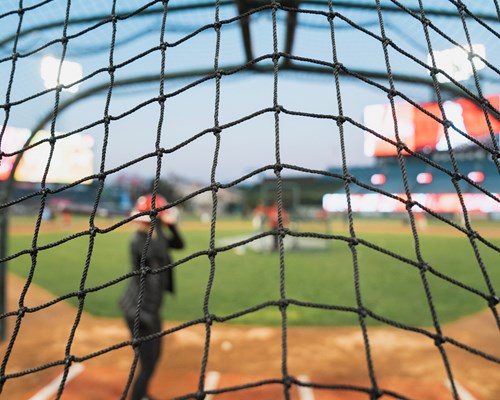Explore the natural wonders of Samana, a narrow peninsula on the north-eastern shore of the Dominican Republic. Samana offers an adventure for everyone, from exploring fascinating caves and cascading waterfalls to watching humpback whales on their annual migration and visiting nearby small idyllic islands. The real treasures lie beyond the city, in the rolling hills and majestic wild beaches. The diversity of the landscape, the spectacular beaches and the humble vibes here make Samana one of the best destinations in the Dominican Republic. Check out our list of the top things to do in the Samana peninsula.
Popular attractions & excursions in Samana

El Salto del Limón
Pouring down the rock face 52 metres up, the El Limon is one of the natural wonders of the peninsular. It can be reached on horseback in a quarter of an hour or trek (five jungle trails lead here and the walk takes around 45 minutes – take decent footwear as it can get muddy). Pack your swimmers as you can take a dip in the natural pool at the bottom of the waterfall.

Natural Kaio Aquarium
The Acuario Natural Kaio is an aquarium off the coast of Las Galeras, where you can swim and snorkel with marine life and watch feeding time. It’s part of an educational and conservational project led by Japanese biologist Kaio Morita.

Samana Treetop Zipline
There are a dozen lines at Samana Zipline, which is based in the mountains and uses state of the art equipment. Zoom over the jungle and Lulu waterfall, where you can swim in the natural pool once back on terra firma.

Cayo Levantado
A 20 minute boat ride from the port and on the entrance to Samana bay, Levantado is one of the bigger Samana cays. Pirates were common visitors in the 17th century – the English pirate Jack Bannister famously fought the Navy from here. More recently, it’s earned the nickname Bacardi Island after appearing in TV adverts – the beaches are famously idyllic, with white sand, bright blue waters and tall palms...

El Valle
On the northern side of the peninsula, one of the main attractions here is the Lulu Waterfall, which you can walk or quad bike through jungle to. Wear your cossie for a refreshing dip in the natural pool. The Playa del Valle is a fabulously pretty beach with big rocks and mountains in the background. The area is also home to the Samana Ziplines, giving you a number of ways to explore.

Whale watching
Each winter, humpbacks swim all the way from Iceland and Greenland to the warm waters of the Dominican coast. Mother whales use Samana Bay to nurse their young. The best time to visit is between January and March - find a boat that’s been authorised by the Ministry of Environment (look for the yellow flag). Or head to Punta Balandra for sightings.

Estadio Julián Javie
If you’re not already into baseball, you soon will be after a trip to the home stadium of Gigantes del Ciba. An hour and a half away, it has regular games throughout baseball season (Oct-Jan) if you want to experience one of the Dom Rep’s greatest passions.

Los Haitises National Park
There’s a lot covered in this 1600km2 of National Park, a true taste of the Dominican Republic’s wild side. “Los Haitises” is Taino for “mountainous land” – a land with rainforest, jungle, mangrove swamp, caves, and offshore cays. The Arena and Linea caves were used by Taino Indians, and you can still see their sculptures and drawings. Others (San Gabriel and Remington) were the hideouts of pirates like Jack Bannister and Roberto Cofresi. Birdwatchers can look out for rare species like the Ridgway’s Hawk. Film buffs – Jurassic Park was shot here (but we haven’t seen any dinosaurs yet…).

Cueva Fun Fun
In the south-east of Los Haitises National Park and accessed through the rainforest - the Fun Fun cave is over twenty million years old, formed by the Almirante river that runs seven kilometres through. Stretching 6km underground, this is one of the biggest caves in the Caribbean Experience stalactites, stalagmites, chimneys and pre-Columbian rock art. Look out for fish and bats.

La Churcha
In the city, this wooden church was brought in parts from England and put together here in 1860 by African American slaves who’d come to Samana having been offered free farmland.

Avenida de la Marina
In Samana City, this Malecon/boulevard facing Samana bay is lined with restaurants, tour companies and the colourful Caribbean houses of the Pueblo Principe plaza. Cameras at the ready for snaps of the bay and the “Bridge to Nowhere”.

Bridge to nowhere
Jutting into the bay, the bridge takes you across to two tiddly cays – and the only way back is the way you came. It was built in the seventies as an attempt by President Balaguer to make the town more suited to tourists. But when he lost the election and Puerto Plata became the new focus, the plan was scrapped leaving it eerily deserted. There’s nothing going on in the bridge or cays, but it’s an interesting wander and you get a good view of the ocean and seaside town.

Museo de las Ballenas
Telling you all you need to know about Samana bay’s annual visitors, the Whale Museum, has a forty-foot female humpback whale skeleton and explains why humpbacks swim thousands of miles to come back every year.

Boco del Diablo
The natural spectacle of the “Mouth of the Devil” can be reached by car or bike from Las Galeras, where 50 metres or so from the shore, sea spray bursts dramatically through a hole in the rock. With tree-covered mountains to one side and the ocean to the other, the views here are phenomenal (you might even spot a humpback whale if you’re lucky).




